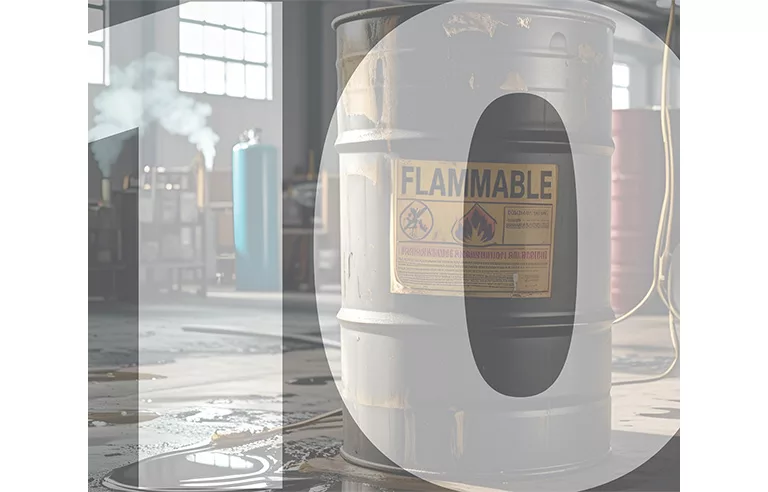What are the top code violations associated with flammable chemicals?

Photo: U.S. Chemical Storage
Responding is Mandy Marxen, commercial marketing manager, U.S. Chemical Storage, North Wilkesboro, NC.
Incidents involving flammable chemicals remain one of the most devastating risks facing industrial operations. The Chemical Safety Board reported 25 major incidents from May 2020 through August 2024, resulting in seven deaths, 23 serious injuries and around $1 billion in damages across 14 states.
The National Fire Protection Association adds that chemical-related fires in U.S. manufacturing facilities cause $1.5 billion in direct property losses annually.
For environmental, health and safety leaders, these figures highlight the need for rigorous compliance when handling and storing flammable chemicals. Improper storage can result in fires, explosions, evacuations and escalating fines.
Why it matters
Violations of OSHA, Environmental Protection Agency and NFPA codes carry serious consequences:
Regulatory fines and enforcement. Penalties escalate if violations cause injury, hazardous releases or repeat offenses.
Insurance impacts. Noncompliance can mean denied claims, higher premiums or canceled coverage.
Operational disruption. Shutdowns and cleanup cause costly downtime.
Reputation damage. Protests, lawsuits and public backlash can permanently harm a brand.
The 2024 BioLab fire in Conyers, GA, illustrates these risks. A sprinkler system malfunction introduced water to trichloroisocyanuric acid – a strong oxidizer that reacts violently with water – releasing chlorine gas and igniting combustible materials. Authorities evacuated 17,000 residents and ordered 90,000 to shelter in place.
With a two-decade history of OSHA violations, the plant faced intense scrutiny and closure. This case shows how ignored violations can culminate in catastrophic loss.
The 10 most common violations
Inspectors and insurers most frequently cite these violations in flammable chemical storage:
- Improper labeling and Safety Data Sheet documentation (OSHA 1910.1200) – Chemicals must be labeled and SDSs must be accessible to guide safe handling.
- Inadequate secondary containment (EPA 40 CFR 264; NFPA 30) – Spill containment is required to keep leaks from soil, water or ignition sources.
- Poor ventilation (NFPA 30, NFPA 91) – Adequate airflow prevents vapor buildup that could harm workers or ignite.
- Improper separation of incompatibles (NFPA 400; OSHA 1910.106) – Flammables, oxidizers and corrosives must be stored apart to avoid reactions.
- Noncompliant electrical equipment (National Electrical Code; NFPA 70; OSHA 1910.307) – Hazardous areas require explosion-proof or intrinsically safe systems.
- Overfilled or improperly stored containers (NFPA 30; OSHA 1910.106) – Limits on container size, fill levels and methods reduce leaks and ignition risk.
- Inadequate fire protection/fire-rated construction (NFPA 1, NFPA 101; OSHA Subpart E) – Buildings must include fire-rated construction, suppression and safe egress.
- Failure to maintain spill response equipment (EPA 40 CFR 112; OSHA 1910.120) – Spill kits, absorbents and emergency gear must be ready at all times.
- Improper hazardous waste storage/disposal (EPA Resource Conservation and Recovery Act; OSHA 1910.120) – Waste must be properly labeled, stored and disposed of by trained personnel.
- Lack of employee training and drills (OSHA 1910.120; NFPA 600) – Workers must be trained regularly on safe handling and emergency response.
Each violation represents more than a citation – it’s a direct threat to people, facilities and brand reputation. The cost of prevention is always less than the cost of catastrophe. By prioritizing these 10 areas, EHS leaders can reduce risk and strengthen resilience.
At McCraren Compliance, we offer a variety of safety training programs to help reduce the risk of accidents. Take a moment to check out our class calendar and see how our training and consulting services can support your safety goals.
Original article published by Safety+Health an NSC publication